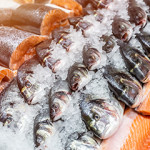New bill would institute harsher penalties for salmon escapes in Chile

The number of salmon escaped from cages at Chile’s salmon farms reached 410,150 in 2020, a surge 4.8 times larger than the 85,697 escapes recorded in 2019, according to information released by the country’s national fisheries service, Sernapesca.
The government agency said that the main causes of the mass salmon escapes included adverse weather conditions, poor maintenance of farming structures, problems associated with handling, vessel crashes, theft at farming centers, and natural predatory action.
While the 378 percent jump in escaped salmonids is concerning, the hike is due principally to the relatively low number of fish escaped in 2019, which had dropped 89 percent from the 752,300 fish escaped in 2018. Considering the total of 4.95 million salmon escaped between the period 2010-2020, last year’s figure is actually about average and pales in comparison to the period’s high of 1.7 million escaped salmon in 2013.
Breaking the 2020 escapes down by region, the Los Lagos Region had by far the highest number at 358,042 escaped salmon in four separate events. It was followed by the Magallanes region with 51,358 fish escaped during one event and the Aysén Region with 750 escaped salmon during three events. The Los Ríos Region saw no escapes during 2020.
According to Article 118 in Chile’s General Law on Fisheries and Aquaculture, fish escapes are considered environmentally damaging if at least 10 percent of the escapees are not recaptured within 30 days of the incident. When it is found that the incident occurred due to a lack of security or maintenance of farming or anchoring structures, authorities can levy fines ranging from the equivalent of CLP 25.6 million to CLP 153 million (USD 35,700 to USD 213,550; EUR 29,500 to USD 176,160). Further, according to Aquaculture Environmental Regulation articles 4, 5, 5A, and 6, companies are required to inspect and review structures twice a year and perform maintenance as needed, keeping records of such at the centers. They also must submit contingency that receive approval from Chile’s environmental service and train all relevant personnel on the implementation of these contingency plans. And if and when an escape happens, a company is required to notify Sernapesca and environmental authorities immediately, implement a recapture plan, and deliver periodic reports.
However, partly in response to public anger over the rising number of escapes, a new bill currently being debated in Chile’s congress that would tighten regulations regarding mass salmonid escapes. Bill 11571-21 would institute penalties for escapes equivalent to the harvest value of the fish present in the center in addition to a suspension of operations during two productive cycles, pending official certification that the center has presented suitable conditions to continue farming while minimizing the risk of escape. Given the current make-up of the congress, the bill is likely to pass.
Chile’s salmon-farming sector is among the country’s most important economic engines, especially in the country’s more remote regions. The relative importance of salmon in Chile’s export economic has practically doubled in the last decade, moving from 6.9 percent of exports of non-copper goods in 2010, to 12.4 percent in 2020 – expanding at an annualized growth rate of 8 percent, according to the latest Quarterly Export Report from the Chilean Salmon Council.
The value of Chile’s salmon exports reached USD 4.4 billion (EUR 3.6 billion) in 2020 despite the COVID-19 pandemic, placing the commodity at the top of the country’s food exports and in second place for exports overall – behind only the country’s cash cow, copper, the council said. The amount of salmon exported in dollar terms was 14.6 percent lower than in 2019 despite a larger export total, which grew to 779,044 metric tons – up 7.5 percent compared to the previous year.
Salmon exports represented 6.1 percent of Chile's total exports, 12.4 percent of exports of non-copper goods, and 46 percent of total food exports in 2020. The third- and fourth-place exported products were cherries, totaling USD 1.6 billion (EUR 1.3 billion), and bottled wine, which totaled USD 1.5 billion (EUR 1.2 billion), according to the council.
Further, antimicrobial use in Chile’s salmon farming industry has been falling. It decreased nearly 45 percent in the last five years, Sernapesca reported last year.
The reduction has been due to the implementation of various measures, including the online system of veterinary prescriptions, antimicrobial-free certification, the manual of best practices, and particularly increased information transparency, which is essential for proper management and efficient antimicrobial use.
Photo courtesy of ausfilms/Shutterstock






Share